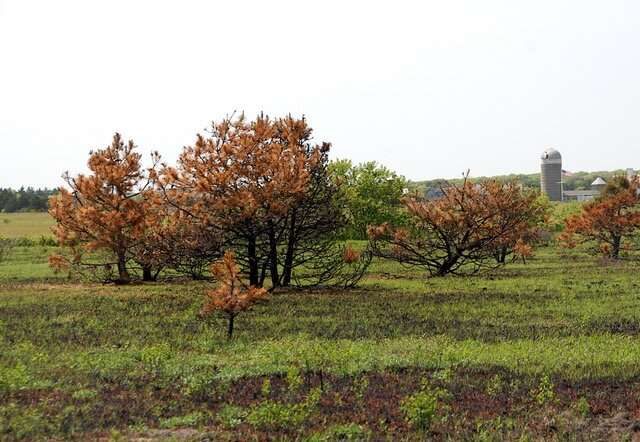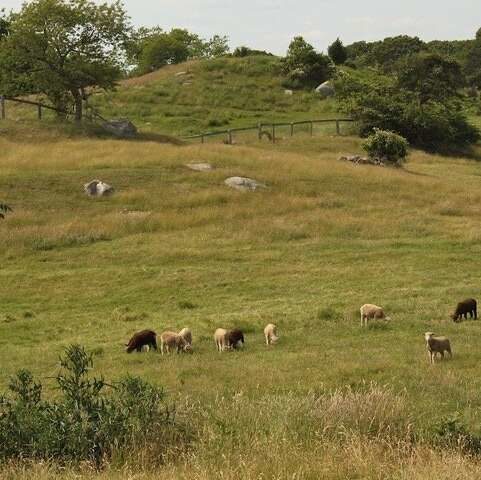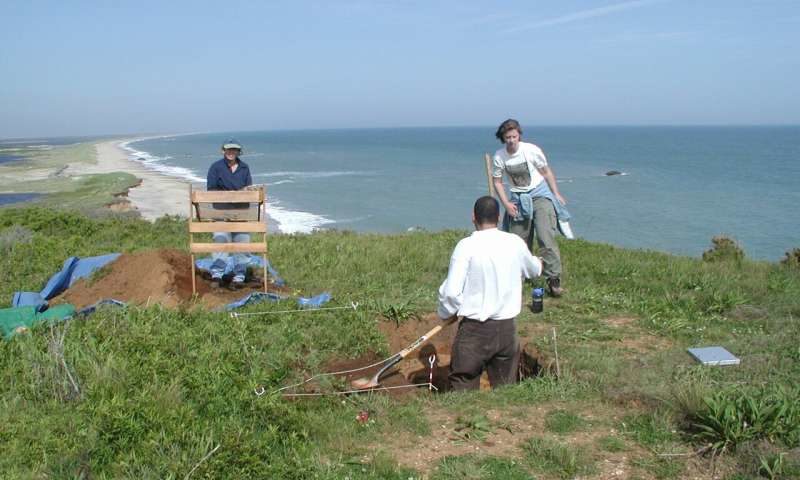
The study, led by archaeologists, ecologists, and paleoclimatologists at Harvard, Emerson College and elsewhere, focuses on the coast from Long Island to Cape Cod and the nearby islands of Nantucket, Martha's Vineyard, Block Island, and Naushon — areas that historically supported the greatest densities of Native people in New England and today are home to the highest concentrations of rare habitats in the region, including sandplain grasslands, heathlands, and pitch pine and scrub oak forests.
"For decades, there's been a growing popularization of the interpretation that, for millennia, Native people actively managed landscapes — clearing and burning forests, for example — to support horticulture, improve habitat for important plant and animal resources, and procure wood resources," says study co-author David Foster, Director of the Harvard Forest at Harvard University. This active management is said to have created an array of open-land habitats and enhanced regional biodiversity.

Fires were uncommon, the study shows, and Native people foraged, hunted, and fished natural resources without actively clearing much land.
"Forest clearance and open grasslands and shrublands only appeared with widespread agriculture during the European colonial period, within the last few hundred years," says Wyatt Oswald, a professor at Emerson College and lead author of the study.
The authors say the findings transform thinking about how landscapes have been shaped in the past — and therefore how they should be managed in the future.
"Ancient Native people thrived under changing forest conditions not by intensively managing them but by adapting to them and the changing environment," notes Elizabeth Chilton, archaeologist, co-author of the study, and Dean of the Harpur College of Arts and Sciences at Binghamton University.
To reconstruct historical changes to the land, the research team combined archaeological records with more than two dozen intensive studies of vegetation, climate, and fire history spanning ten thousand years. They found that old-growth forests were predominant for millennia but are extremely uncommon today.
"Today, New England's species and habitat biodiversity are globally unique, and this research transforms our thinking and rationale for the best ways to maintain it," says Oswald. "It also points to the importance of historical research to help us interpret modern landscapes and conserve them effectively into the future."

Foster notes that the unique elements of biodiversity initiated through historical activities can be encouraged through analogous management practices today.
"Protected wildland reserves would preserve interior forest species that were abundant before European settlement," he says. "Lands managed through the diversified farming and forestry practices that created openlands and young forests during the colonial period would support another important suite of rare plants and animals."
For successful conservation models that leverage this historical perspective, the authors point to efforts by The Trustees of Reservations, the oldest land trust in the world, which manages more than 25,000 acres in Massachusetts embracing old and young forests, farms, and many cultural resources. The organization uses livestock grazing to keep lands open for birds like bobolinks and meadowlarks, which in turn supports local farmers and produces food for local communities.
Jocelyn Forbush, Executive Vice President for the Trustees, says, "Maintaining the legacy of our conserved openlands in Massachusetts is an important goal for The Trustees and we are increasingly looking to agricultural practices to yield a range of outcomes. In particular, we are employing grazing practices to support the habitats of our open and early successional lands in addition to the scenic and cultural landscapes that shape the character of our communities."



Comment: As noted above, the conservationists - opening up the land with controlled burning - have actually been doing the exact opposite to what the native peoples were doing. And this wouldn't be the first time ill-informed and biased conservation efforts, despite their best intentions, have run counter to what nature intends. It also reflects that, in the long term, man's impact is relatively insignificant: